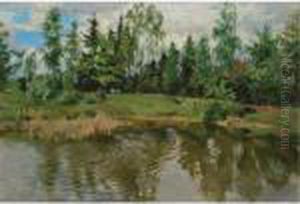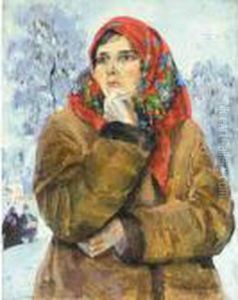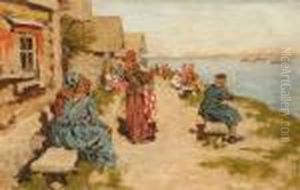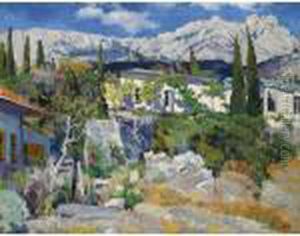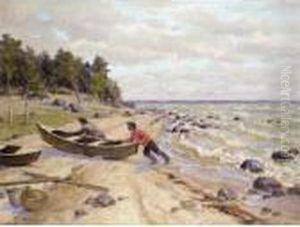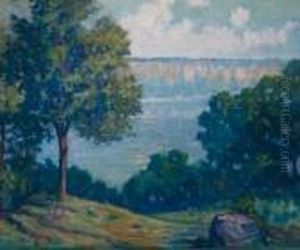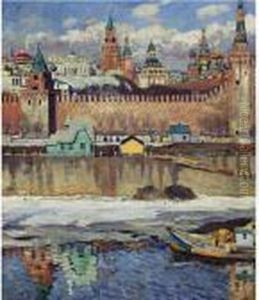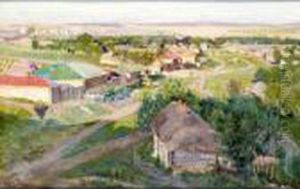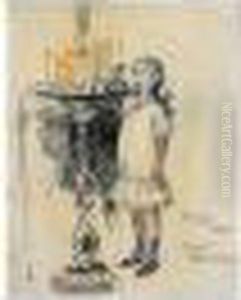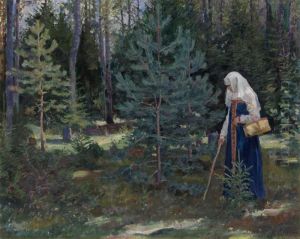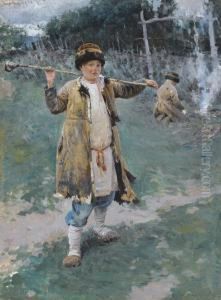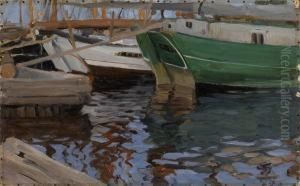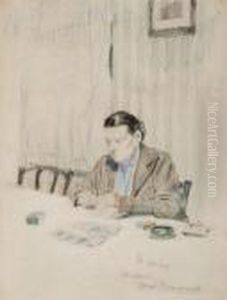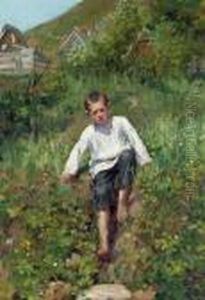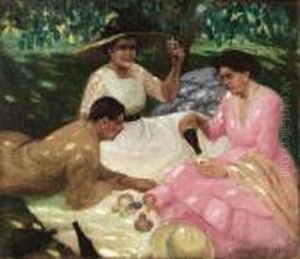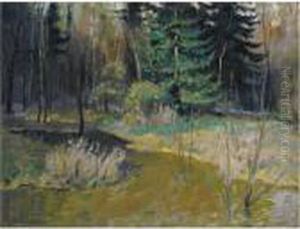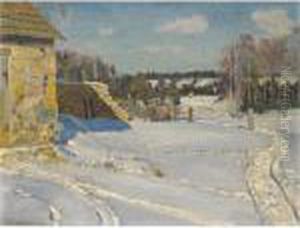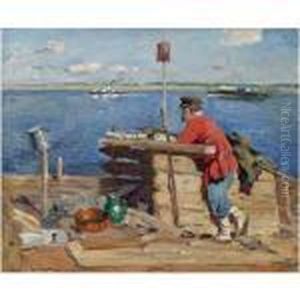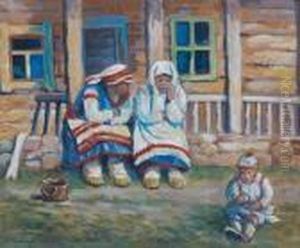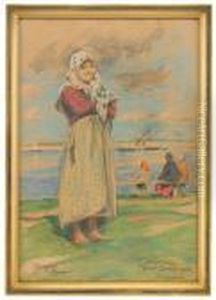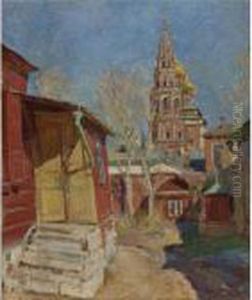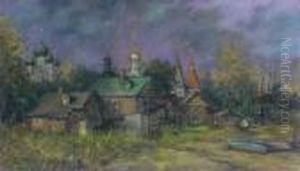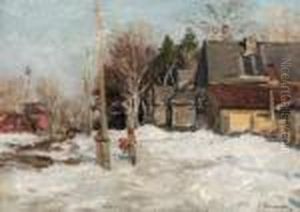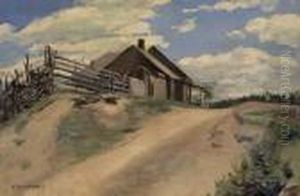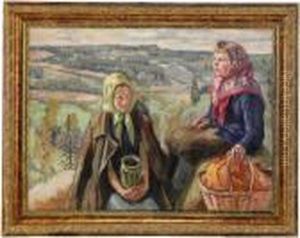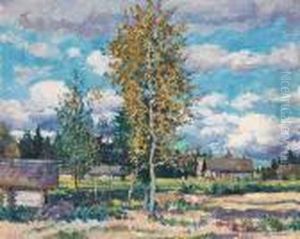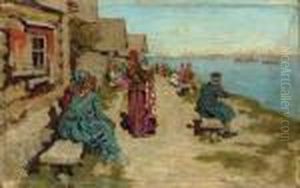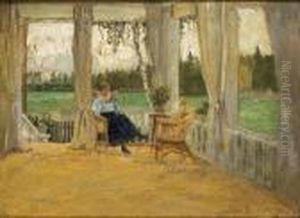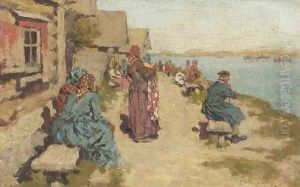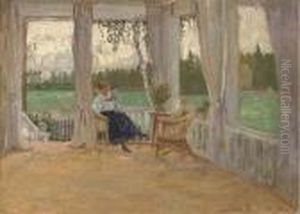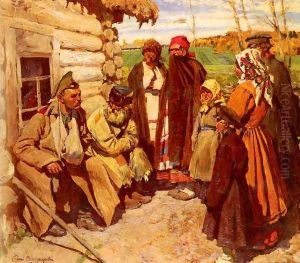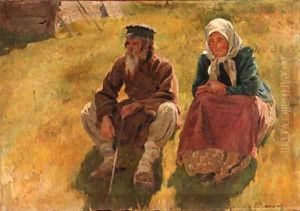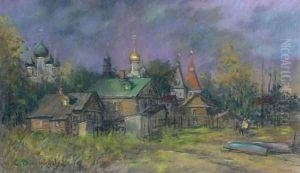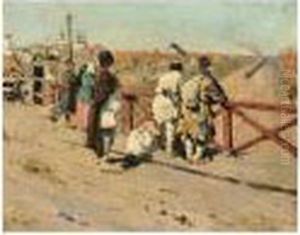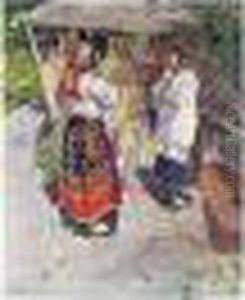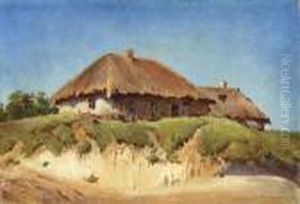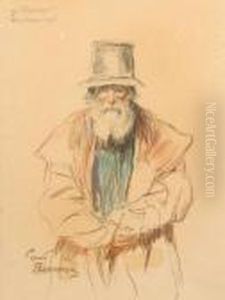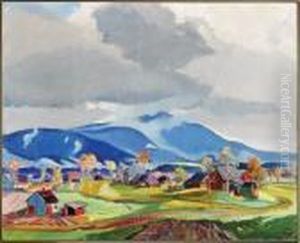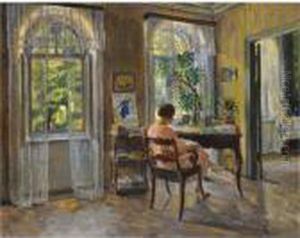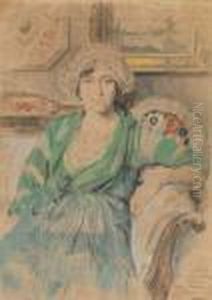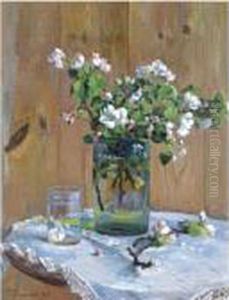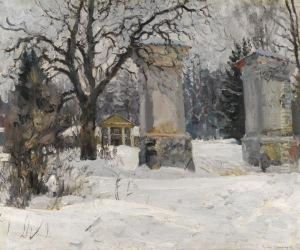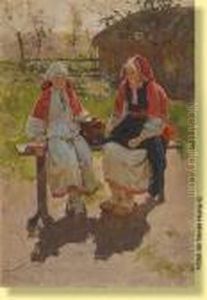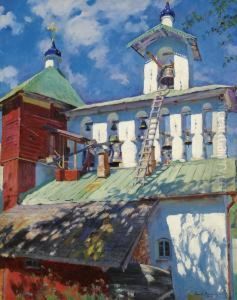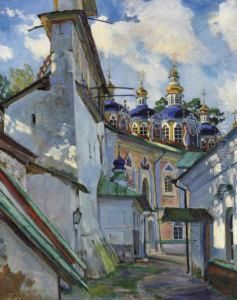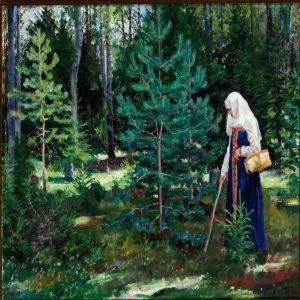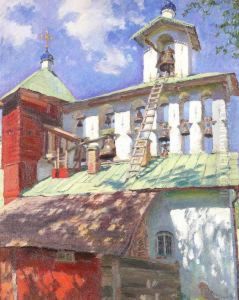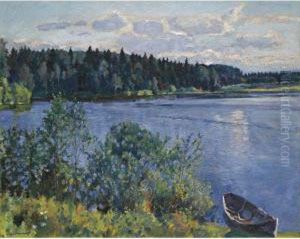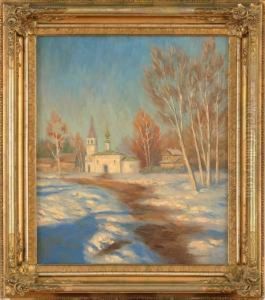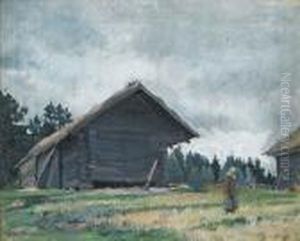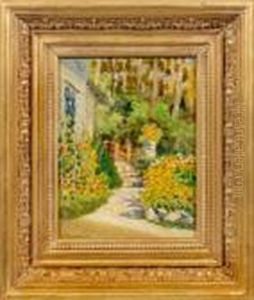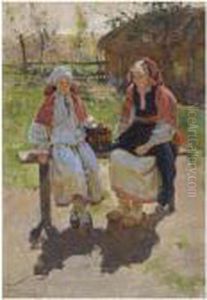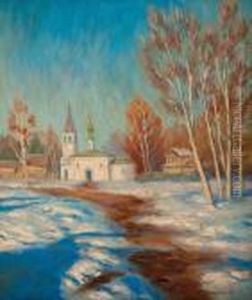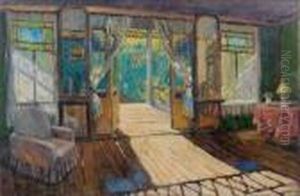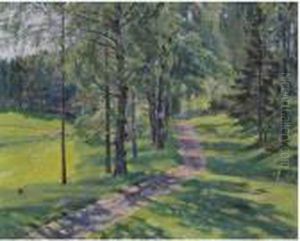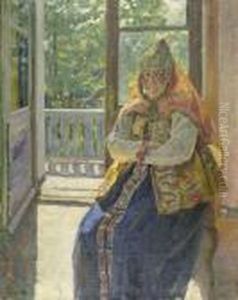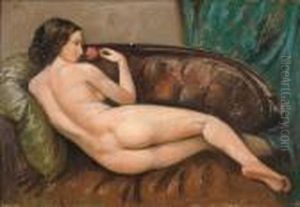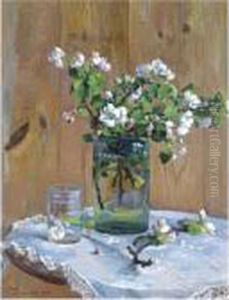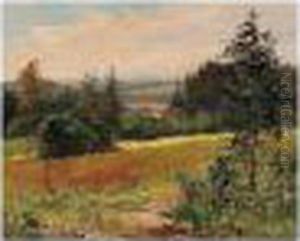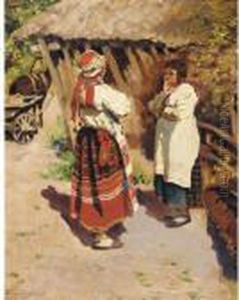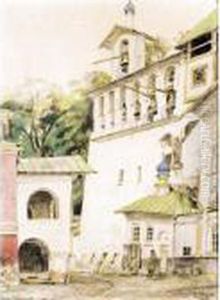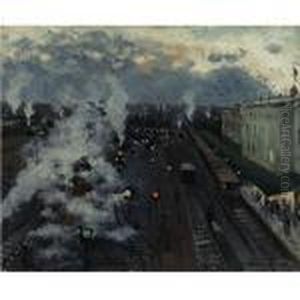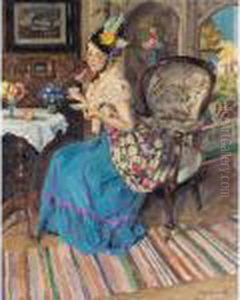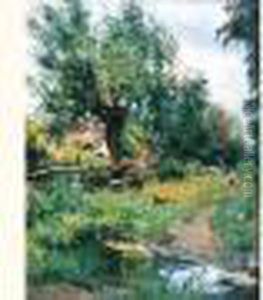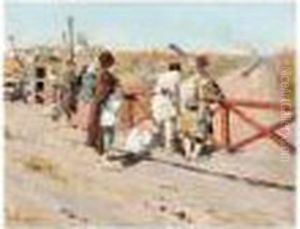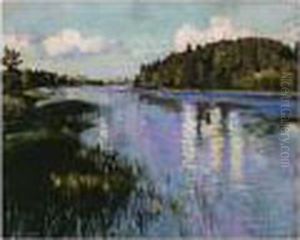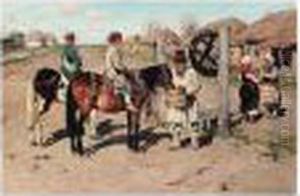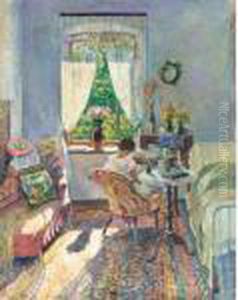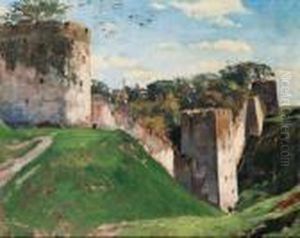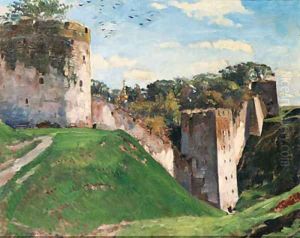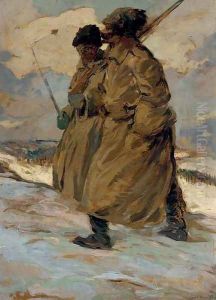Sergey Arsenievich Vinogradov Paintings
Sergey Arsenievich Vinogradov was a distinguished Russian and Soviet painter who played a significant role in the Russian art scene during the late 19th and early 20th centuries. Born on April 17, 1869, in Moscow, Vinogradov was exposed to the vibrant cultural milieu of the city from an early age. He displayed a keen interest in art and consequently pursued his education at the Moscow School of Painting, Sculpture and Architecture, where he studied under notable artists such as Isaac Levitan and Abram Arkhipov.
Vinogradov was known for his impressionistic approach to painting, which was quite innovative for Russian artists of his time. His works often depicted the Russian countryside and the daily life of its inhabitants, reflecting his deep connection to the rural landscapes and his observations of peasant life. Vinogradov's style emphasized light and color, capturing the fleeting moments of everyday scenes with a sense of immediacy and vitality.
In the early 20th century, Vinogradov's career flourished, and he became a member of the 'Union of Russian Artists' as well as the 'Association of Traveling Art Exhibitions', also known as the Peredvizhniki. These groups were significant in promoting Russian art and organizing exhibitions that toured across the country, bringing art to a wider public.
After the Russian Revolution of 1917, Vinogradov faced new challenges under the Soviet regime. Despite the political upheavals, he continued to work and adapt to the changing times. His later works still retained the lyrical qualities of his earlier paintings, but they also began to incorporate elements that aligned with the ideological demands of Socialist Realism, which became the official art form of the Soviet Union.
Sergey Vinogradov's contribution to Russian art was not limited to his paintings; he was also a respected art teacher. Throughout his career, he taught at several art institutions, sharing his knowledge and skills with the next generation of Russian artists.
Vinogradov's life and career were cut short by the repressions of the Stalinist era. He was arrested during the Great Purge and died on December 5, 1938, under unclear circumstances. Despite the tragic end to his life, Vinogradov's artistic legacy continues to be celebrated for its depiction of Russian life and the natural beauty of the Russian landscape, marked by his distinctive impressionistic touch.
